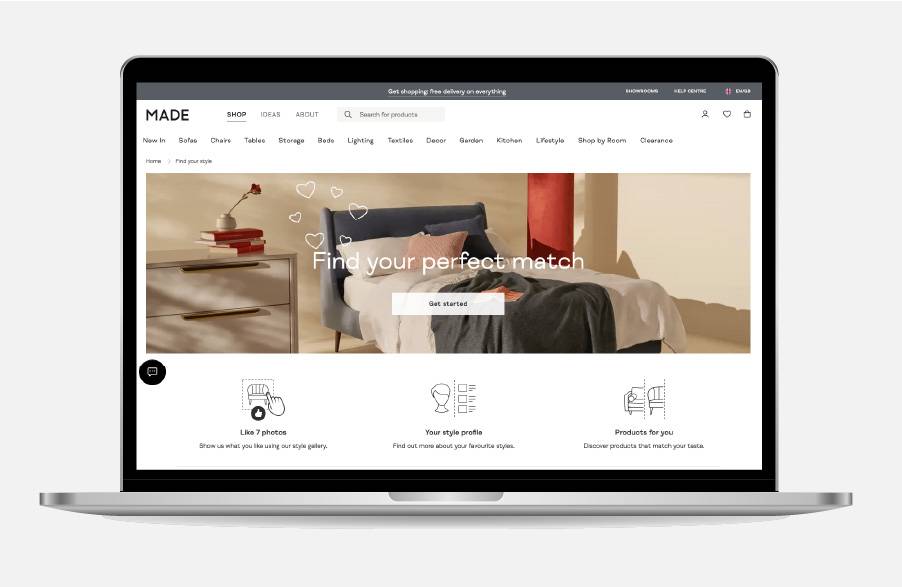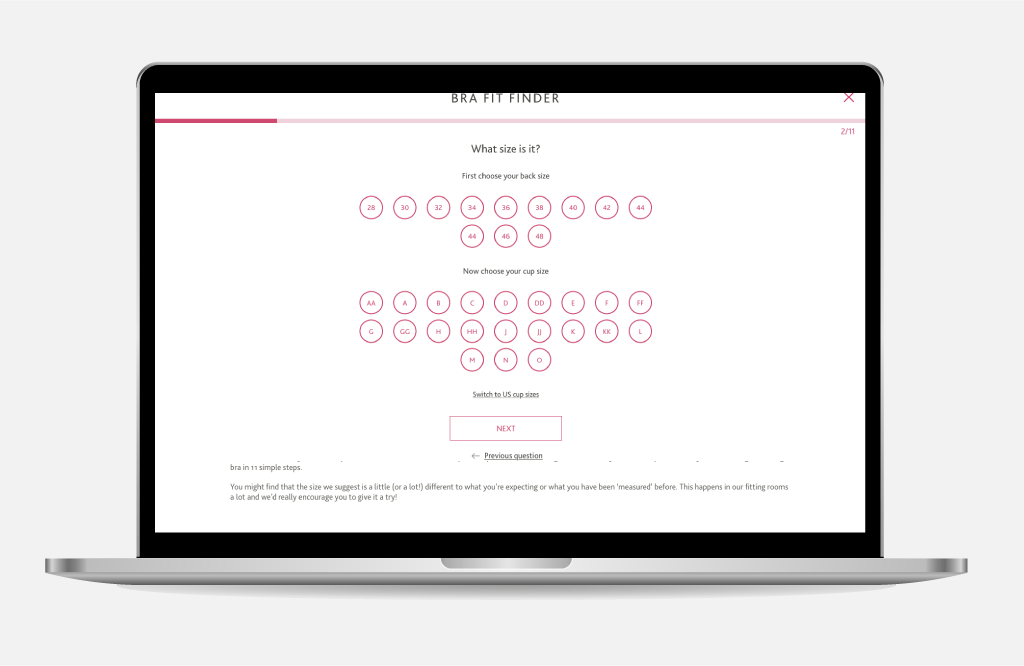It enhances your overall customer experience
Rather than customers coming to your site and feeling overwhelmed searching for what they want, a filtering tool will do the hard work for them and streamline their results. The personalised solutions will leave customers feeling catered for, which simplifies their journey to conversion.
For example, Illamasqua has numerous static guides to help its consumers find the right makeup product. Find your perfect shade allows consumers to click through just three questions about their skin tone and type to find tailored results.
You can see that with this type of content, the URL also changes with every click. As each page offers unique value, they’re indexed so users can find them through search too. You can track them through analytics so different page URL structures work in their favour.

You can double your conversion rates
Interactive content has been shown to double the conversion rate compared to static since these types of assets demand engagement, tailor content to the customer’s needs, and encourage action. Filtering tools definitely fall into that category and whether it’s directing people to read relevant guides or discover new products, it takes customers on a journey that encourages them to click and convert.
Take Made.com for example, a huge website with so many items. How do they help consumers find what they’re looking for? The answer: an interactive style guide that encourages users to like images that most reflect their personal style. The JavaScript framework generates a list of items that cleverly correspond to the consumer’s style. It feels considered, personalised, and thoughtful enough for the results to seem accurate, which, in turn, inspires action.

It’ll help you better understand your customers needs
Having an interactive filtering tool is one thing. It’s also important to use your analytics platform to track how customers are using it, as these insights – such as the categories they build using the tool and what they go on to purchase – can be used to enhance your overall marketing strategy.
A trend for a certain combination of parameters might even indicate a whole new audience or ingenious use case for your product. You can then go on to promote this via social, editorial or simply by creating a new category page.
If you were to discover a new trend for white wedding boots for example, you could decide to incorporate that into your offering on your site, in your advertising, and even in store.

You’ll build a highly valuable email list
For more complex filtering tools, it might be appropriate to request an email address to allow people access to their curated content or expert product recommendations.
Clothing brands for example might use a filtering tool to help customers replicate their personal shopping experience online and take someone through a series of questions about their preferences, lifestyle and favourite looks. After investing time answering these questions and interacting with the tool, the person is more likely to give their email address in exchange for the valuable results.
Customers who give their email address at this stage are likely to have a higher conversion potential as they have already engaged with your brand and products.
It will help you reduce product returns
High rates of product returns are a problem for a lot of e-commerce brands. But what if we told you that filtering tools could help?
Showcasing the right product to the right people in the first place can lower the chances of them returning it; the more tailored the information consumers have before they make a purchase, the better decisions they’ll make upfront. And, as we explored recently, lower rates of returns can have a huge impact on overall profit, so it’s another win-win.
You can use it to communicate brand values
If you’re investing in a new tool, you’re going to want to maximise its value from every angle – and that includes using it to promote your brand USPs. As well as making sure the copy and design is consistent with your branding, you can use the tool’s functionality to elevate your positioning and product benefits. For example, if your brand’s mission is to reduce plastic waste, add a filter to show plastic free products.
A great example of this is Bravissimo’s bra fit finder tool which embodies their mission to create ‘feel-good fitting experiences’.

True innovation earns coverage and links
Publications regularly cover technical innovation in the digital space: IKEA’s augmented reality app earnt placements across lifestyle, industry and tech publications.
Similarly, we recently leveraged our content filtering tool for Sage.com to earn coverage, links and audience engagement. The tool curates expert resources according to the person’s financial knowledge and business acumen. Thanks to its genuinely useful output and innovative format, the tool generated dozens of high-quality placements and links in relevant publications and reached 12 million people across social as well as driving valuable organic traffic to the site.

Final thoughts
Now you know what makes a great filtering tool and can see how to leverage one in your marketing strategy with the examples above, it’s time to get creative and reap the benefits for your own business.
If one of these examples speaks to you and your business, or if you’d rather think about a more tailored solution that will help you stand out even more, you can always message us about the problems you’re experiencing and, together, we can work on that. There isn’t a one size fits all when it comes to a filtering tool, and the best results come when it’s built bespoke to the business.
For more advice on small changes that will improve your user experience and SEO in the meantime, check out how to drive conversiookayns and traffic with these CRO quick wins.
